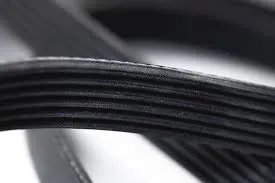- Arabic
- French
- Russian
- Spanish
- Portuguese
- Turkish
- Armenian
- English
- Albanian
- Amharic
- Azerbaijani
- Basque
- Belarusian
- Bengali
- Bosnian
- Bulgarian
- Catalan
- Cebuano
- Corsican
- Croatian
- Czech
- Danish
- Dutch
- Afrikaans
- Esperanto
- Estonian
- Finnish
- Frisian
- Galician
- Georgian
- German
- Greek
- Gujarati
- Haitian Creole
- hausa
- hawaiian
- Hebrew
- Hindi
- Miao
- Hungarian
- Icelandic
- igbo
- Indonesian
- irish
- Italian
- Japanese
- Javanese
- Kannada
- kazakh
- Khmer
- Rwandese
- Korean
- Kurdish
- Kyrgyz
- Lao
- Latin
- Latvian
- Lithuanian
- Luxembourgish
- Macedonian
- Malgashi
- Malay
- Malayalam
- Maltese
- Maori
- Marathi
- Mongolian
- Myanmar
- Nepali
- Norwegian
- Norwegian
- Occitan
- Pashto
- Persian
- Polish
- Punjabi
- Romanian
- Samoan
- Scottish Gaelic
- Serbian
- Sesotho
- Shona
- Sindhi
- Sinhala
- Slovak
- Slovenian
- Somali
- Sundanese
- Swahili
- Swedish
- Tagalog
- Tajik
- Tamil
- Tatar
- Telugu
- Thai
- Turkmen
- Ukrainian
- Urdu
- Uighur
- Uzbek
- Vietnamese
- Welsh
- Bantu
- Yiddish
- Yoruba
- Zulu
Aug . 01, 2024 02:41 Back to list
Timing Belt Replacement Guide for Hyundai H100 Maintenance and Performance Enhancement
Understanding the Timing Belt for Hyundai H100 Maintenance and Importance
The Hyundai H100, a versatile and reliable light commercial vehicle, is popular in various markets for its performance and durability. One of the critical components in the H100's engine system is the timing belt, which plays a vital role in ensuring the engine runs smoothly. Understanding the timing belt's function, maintenance requirements, and the consequences of neglecting it is essential for every H100 owner.
What is a Timing Belt?
The timing belt is a rubber belt that synchronizes the movements of the engine's camshaft and crankshaft. This synchronization is crucial because it ensures that the engine's valves open and close at the correct times during each cylinder's intake and exhaust strokes. In simple terms, the timing belt helps coordinate the engine's internal workings, allowing it to function efficiently.
Importance of the Timing Belt
For the Hyundai H100, the timing belt is of utmost importance for several reasons
1. Prevention of Engine Damage If the timing belt fails or slips, it can lead to severe engine damage. In interference engines like the H100, a broken timing belt can cause the pistons to strike the valves, resulting in costly repairs. Regular maintenance and timely replacement of the belt can prevent such catastrophic failures.
2. Enhanced Performance A well-maintained timing belt ensures that the engine maintains optimal performance. This means better fuel efficiency, smoother acceleration, and reduced emissions. A worn-out belt can lead to decreased performance and increased strain on the engine components.
for hyundai h100 timing belt

3. Cost-Effectiveness Regular inspections and replacements of the timing belt are more cost-effective than waiting for a failure to occur. The costs associated with a timing belt replacement are significantly lower than the repairs needed for an engine that has suffered from a broken belt.
Maintenance and Replacement
Hyundai recommends that the timing belt be replaced every 60,000 to 100,000 kilometers, depending on driving conditions and maintenance practices. However, it is always advisable to consult the owner's manual or a certified mechanic for specific recommendations. Signs that the timing belt may need replacement include
- Cracks or Wear Visually inspecting the timing belt for any signs of wear, such as cracks or fraying, is essential. If you observe any damage, it is advisable to replace the belt immediately.
- Engine Noise Unusual noises coming from the engine, such as ticking or knocking noises, may indicate timing issues. If these sounds are present, a mechanic should examine the timing belt and associated components.
- Check Engine Light If the check engine light comes on, it may refer to a timing belt issue. It's essential to have the vehicle's diagnostic codes checked by a professional to determine the cause.
Conclusion
The timing belt is an integral part of the Hyundai H100's engine system, and neglecting its maintenance can lead to significant issues down the road. Owners should stay informed about the timing belt's condition and adhere to the recommended service intervals for replacement. By doing so, they can ensure the longevity of their vehicle while enjoying optimal performance and peace of mind. Regular maintenance not only protects your investment but also enhances your driving experience, keeping your Hyundai H100 running smoothly for years to come.
-
Korean Auto Parts Timing Belt 24312-37500 For Hyundai/Kia
NewsMar.07,2025
-
7PK2300 90916-T2024 RIBBED BELT POLY V BELT PK BELT
NewsMar.07,2025
-
Chinese Auto Belt Factory 310-2M-22 For BMW/Mercedes-Benz
NewsMar.07,2025
-
Chinese Auto Belt Factory 310-2M-22 For BMW/Mercedes-Benz
NewsMar.07,2025
-
90916-02660 PK Belt 6PK1680 For Toyota
NewsMar.07,2025
-
drive belt serpentine belt
NewsMar.07,2025

